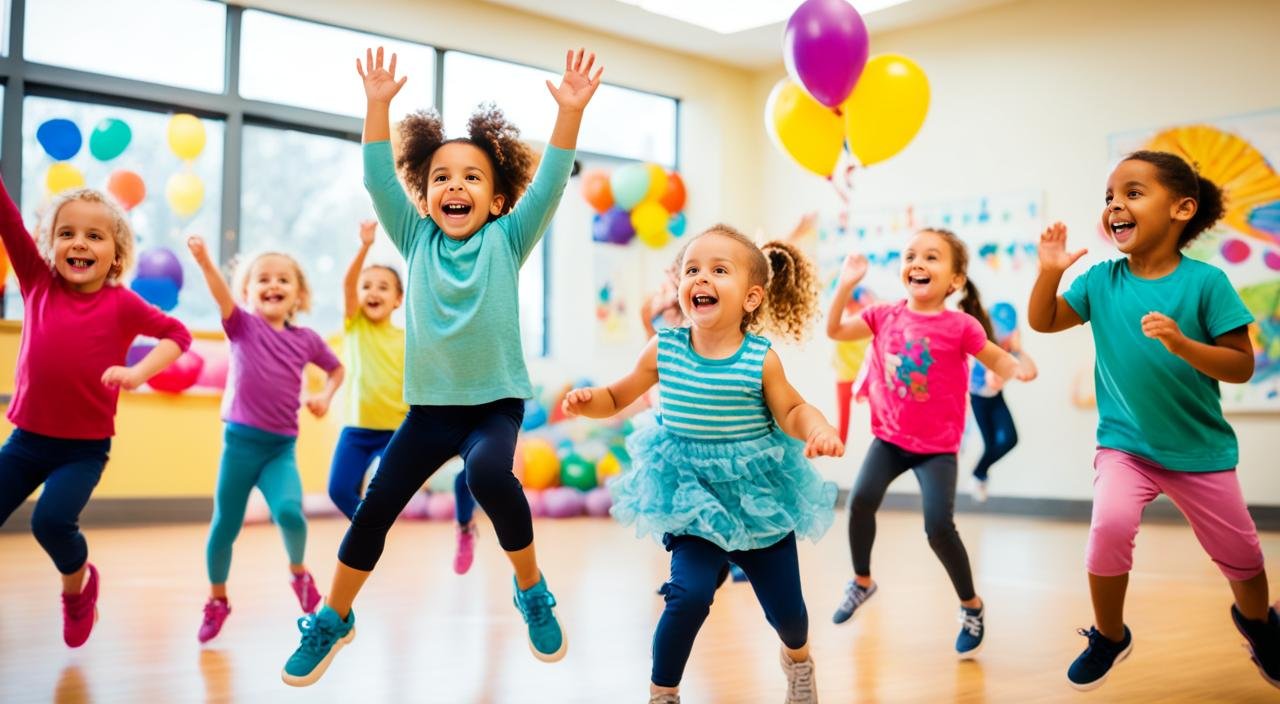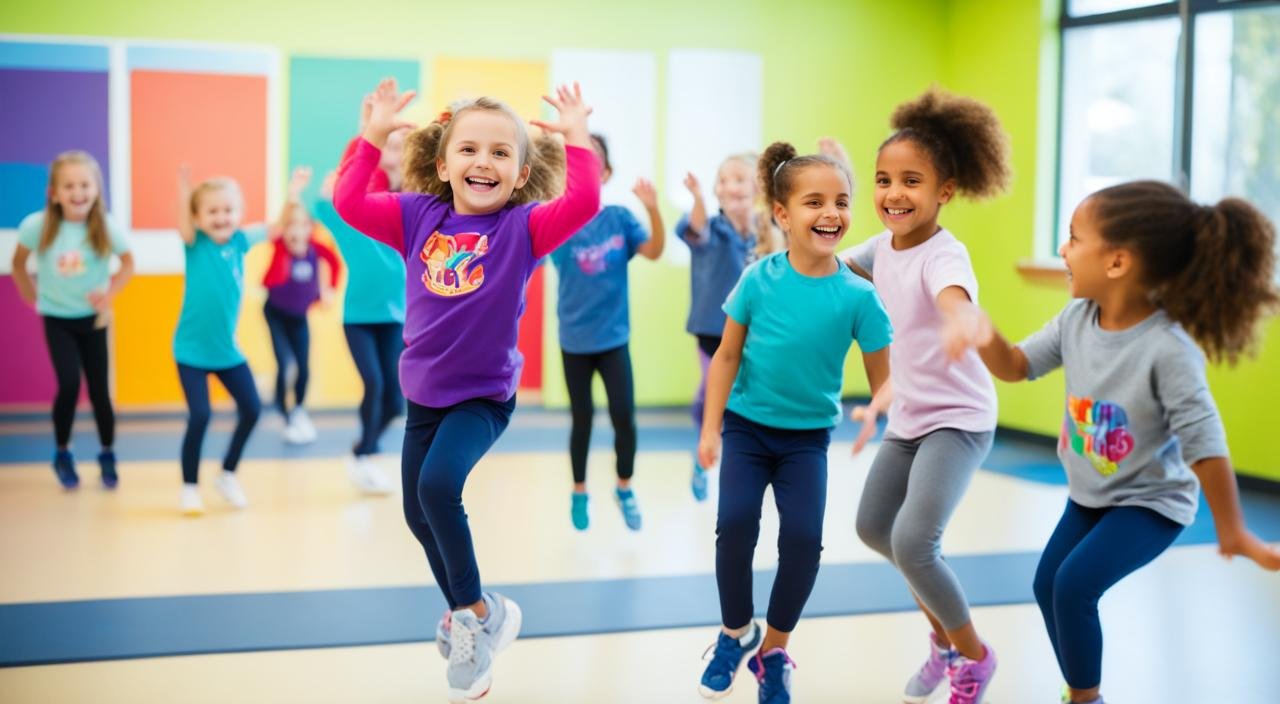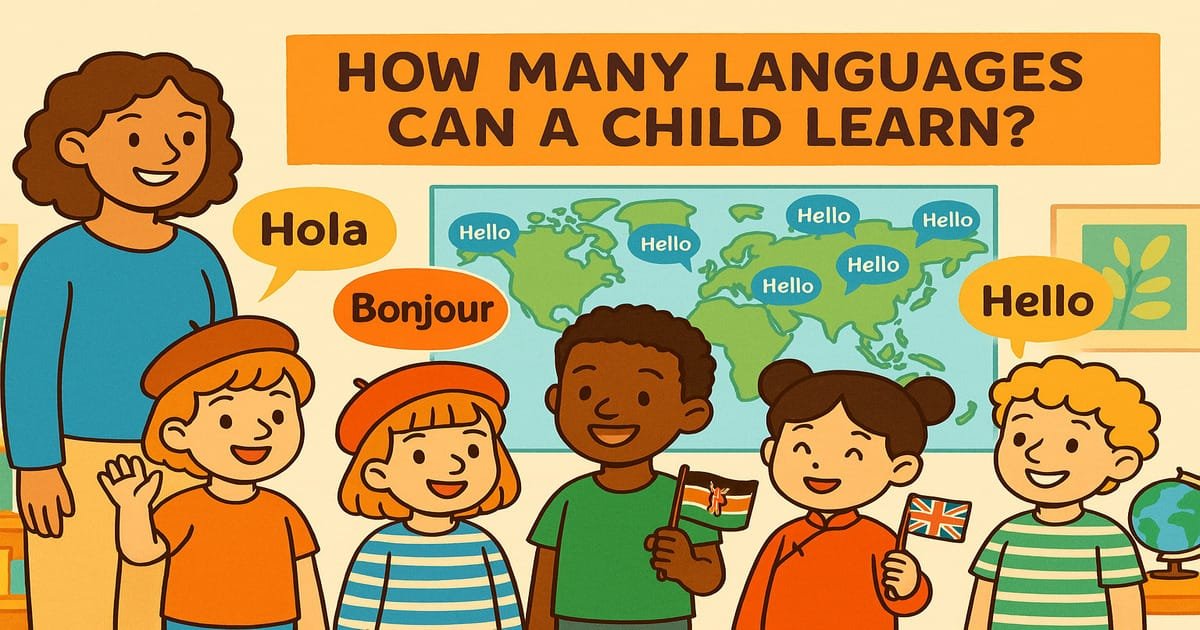Meet Lily, a energetic and enthusiastic 7-year-old who has always had a passion for dance. From a young age, Lily spent countless hours twirling and tapping around her living room, mimicking the dancers she watched on television. Her love for movement was undeniable, and her parents wanted to nurture her talent by enrolling her in dance classes.
However, as Lily stepped into her first dance class, she found herself feeling overwhelmed. The instructor was teaching complex choreography that was difficult for her to grasp as a beginner. Lily’s excitement quickly turned into frustration, and she began to doubt her abilities.
Recognizing Lily’s disappointment, her parents decided to take matters into their own hands. They embarked on a mission to find the best strategies to teach dance to young children like Lily. Through their research and experimentation, they discovered valuable techniques and tips that transformed Lily’s dance journey.
Today, Lily is a confident and skilled dancer, thanks to the effective teaching methods her parents implemented. Inspired by Lily’s transformation, her parents are now eager to share their insights and experiences in teaching kids dance. Whether you’re a parent or a dance instructor, this article will provide you with practical tips, valuable techniques, and a comprehensive guide to teaching children the art of dance.
- Teaching dance to young children requires adapting your teaching style to their developmental stage.
- Keep choreography simple and break down steps into easy-to-digest elements.
- Focus on rhythm and build repetition into choreography.
- Use positive reinforcement and make dance class fun for kids.
- By implementing these strategies, you can create a memorable and enjoyable learning experience for children.
Understanding the Developmental Stage of Young Children
When teaching dance to young children, it is important to have a clear understanding of their developmental stage. This knowledge allows you to tailor your teaching style and choreography to meet their needs and abilities. Young children in kindergarten to second grade, for example, have a better grasp of movement but may struggle with remembering extended choreography. On the other hand, children in third to fifth grade can understand various choreographic structures.
To effectively teach dance to young children, it is crucial to adapt your teaching style to match their age group. By keeping choreography simple and using basic movements, you can ensure that they can grasp and execute the steps with confidence. This approach will help them develop a strong foundation in dance and allow them to progress further in their skills and abilities.
| Key Considerations for Teaching Dance to Young Children | Kindergarten to Second Grade | Third to Fifth Grade |
|---|---|---|
| Ability to grasp movement | 🟢 Strong grasp of movement | 🟢 Strong grasp of movement |
| Difficulty remembering extended choreography | 🔴 Struggle with extended choreography | 🟢 Can understand various choreographic structures |
| Recommended teaching style | 🔵 Keep choreography simple | 🔵 Use basic movements |
By aligning your teaching style with the developmental stage of young children, you can create a positive and effective learning environment for them. This approach ensures that they can fully engage with the dance instruction and make meaningful progress in their dance journey.
Recognizing the Importance of Rhythm
When teaching dance to young children, it is crucial to recognize the importance of rhythm. Developing a sense of rhythm not only enhances their dance skills but also lays the foundation for their musicality and overall movement coordination.
Teaching rhythm to children involves helping them understand how to move in time with the music and match their movements to different speeds. By prioritizing rhythm instruction, you set them up for success in more advanced dance classes and enable them to fully express themselves through movement.
“Rhythm is a vital element of dance, allowing children to connect with the music and feel the beat. It helps them move in sync, create fluid transitions, and bring out the true essence of the choreography.”
One effective way to teach rhythm is by incorporating rhythmic exercises and games into dance classes. For example, you can have children clap their hands or stomp their feet in time with the music. This helps them develop an internal sense of rhythm and improve their ability to sync their movements with the beat.
Another strategy is to use visual cues to guide children in matching their movements to the music. For instance, you can teach them to raise their arms during the chorus or take big steps during a faster section of the song. This combination of visual and auditory cues reinforces the importance of rhythm and helps children understand how their movements correspond to the music.
The Role of Rhythm in Dance
Rhythm is a fundamental element of dance, as it provides structure, musicality, and coordination to a performance. It helps dancers execute movements precisely and synchronizes their actions with the accompanying music.
By teaching rhythm to children from an early age, you lay the groundwork for their future dance endeavors. They will be able to execute choreography with precision, maintain consistent timing, and fully express themselves through movement.
Furthermore, developing a strong sense of rhythm enhances children’s overall musicality and enables them to appreciate and connect with music on a deeper level. This musicality extends beyond the dance studio and positively impacts their overall cognitive development and creative expression.
| Benefits of Teaching Rhythm to Children |
|---|
| Enhanced coordination and body awareness |
| Improved timing and synchronization |
| Increased musicality and appreciation for music |
| Enhanced ability to memorize and execute choreography |
| Development of a strong foundation for future dance training |
Incorporating Repetition into Choreography
Repetition plays a crucial role in dance, especially when teaching young children. It provides structure and helps children develop a solid foundation in their dance technique. By incorporating repetition into choreography, teachers can create an effective and engaging learning experience for their students. Here are some strategies for using repetition in dance:
Create Consistent Movement Patterns
To make it easier for young children to learn and develop musicality, use consistent movement patterns during the chorus of a song. By repeating the same movements, children can become familiar with the choreography and feel more confident in their execution. This repetition also helps them connect the movements to the rhythm and flow of the music. Here’s an example of a simple chorus choreography using repetition:
During the chorus of the song, teach the following movements:
- Step to the right and clap twice.
- Step to the left and clap twice.
- Jump forward with arms raised.
- Jump backward with arms lowered.
Facilitate Smooth Transitions
Repetition in choreography also helps with transitioning between different activities or sections of a dance. By repeating certain movements, children can easily move from one part of the routine to another without confusion or hesitation. This allows for a seamless flow during performances or dance classes. Here’s an example of how repetition can be used to facilitate smooth transitions:
When transitioning from the chorus to a verse, repeat the following movements:
- March in place while clapping.
- Turn in a circle.
- March backward.
- Turn in a circle again.
Maintain Focus and Retention
Repetition also helps young children maintain focus and retain the choreography. By practicing the same movements repeatedly, children develop muscle memory and improve their ability to execute the steps correctly. This repetition enhances their overall dance skills and builds a strong foundation for future learning. It’s important to strike a balance between repetition and variety to keep children engaged and motivated during dance classes.
Incorporating repetition into choreography can greatly benefit young children learning dance. It provides structure, facilitates smooth transitions, and helps students maintain focus and retention. By using repetition effectively, teachers can create an enjoyable and effective learning experience for their young dancers.
Utilizing Positive Reinforcement
Positive reinforcement plays a crucial role in creating a positive and supportive learning environment in dance classes for young children. By incorporating praise and implementing reward systems, dance instructors can effectively motivate and encourage students.
When teaching choreography to young children, it is essential to use praise more frequently than criticism. Positive feedback helps boost children’s confidence and instills a sense of accomplishment. By acknowledging their efforts, progress, and improvement, students feel valued and motivated to continue learning.
“Children need encouragement and positive reinforcement to thrive in any learning environment. When it comes to dance instruction, praise becomes even more important as it instills a love for dance while building their self-esteem and confidence.”
Another way to reinforce positive behavior and achievements is by implementing a reward system. A sticker chart, for example, can be used to track and reward children for their efforts and accomplishments in dance class. Each time a student demonstrates progress, follows instructions, or shows enthusiasm, they can receive a sticker to add to their chart. As they accumulate stickers, they can earn small rewards or special privileges.
This positive reinforcement technique not only helps motivate children but also creates a sense of excitement and fun in the dance classroom. It encourages a growth mindset and fosters a love for dance as students associate their efforts with a tangible reward.
Positive reinforcement promotes a nurturing and supportive atmosphere where students feel valued, encouraged, and motivated to excel in their dance journey. By utilizing praise and implementing reward systems, dance instructors can effectively inspire and empower young dancers.
Making Dance Class Fun for Kids
When teaching young children dance, it’s essential to focus on the sheer joy of movement and learning their bodies. By making the dance class as fun as possible, you can engage children and maintain their enthusiasm for dance. Here are some strategies to create an enjoyable and exciting dance experience for kids:
- Incorporate games: Introduce interactive games that incorporate dance steps and movements. For example, play “Freeze Dance” where children have to freeze in a specific position when the music stops. This adds an element of excitement and creativity to the class.
- Use props: Props like scarves, ribbons, or hula hoops can make dance lessons more exciting. Incorporate these props into choreography or encourage children to explore their movements using the props. This adds a sense of playfulness and imagination to the dance class.
- Encourage imaginative play: Incorporate storytelling and imaginative play into dance lessons. This can involve assigning characters or roles to children and encouraging them to express themselves through movement. Imagination helps children connect with the music and dance on a deeper level.
- Create a dance routine together: Collaboratively create a dance routine with the input of the children. This allows them to feel involved and empowered in their learning process. It also gives them a sense of ownership and pride in their dance performance.
By incorporating these strategies, you can make dance class fun and enjoyable for kids, creating a positive environment where they can develop their dancing skills while having a great time.
Strategies for Teaching Preschoolers

Teaching dance to preschoolers requires specific strategies to ensure a productive and engaging learning environment. Preschool-aged children have short attention spans, so it’s important to keep the class moving and maintain their interest throughout the session. By implementing effective teaching techniques, you can effectively manage preschool dance classes and facilitate a positive learning experience for young children.
Keep the Class Moving
Preschoolers have boundless energy, so it’s essential to keep the dance class dynamic and active. Plan activities that involve constant movement to hold their attention and prevent boredom. Incorporate games, interactive exercises, and group activities that encourage participation and foster a sense of enjoyment.
Offer Choices and Explain Clearly
Preschoolers thrive when given choices and opportunities to make decisions. Allow them to choose between different dance movements or sequences, giving them a sense of autonomy and ownership. Additionally, explain each step clearly using visual, auditory, and kinesthetic learning styles. This ensures that all children have a comprehensive understanding of the movements and can follow along with ease.
Provide Positive Feedback and Role Modeling
Positive reinforcement plays a crucial role in the development of preschoolers. Offer genuine praise and encouragement when children demonstrate progress or master a new dance step. Additionally, provide opportunities for children to participate and model behavior. By allowing them to take turns leading small routines or demonstrating movements, you promote confidence and inspire other children to learn and grow.
Teaching dance to preschoolers requires patience, creativity, and a deep understanding of their developmental needs. By utilizing these strategies, you can effectively manage preschool dance classes and foster a love for dance in these young dancers.
Conclusion
Teaching dance to young children requires careful consideration of their developmental stage and learning needs. By adapting teaching methods to their abilities and creating a positive learning environment, you can provide effective dance instruction for kids. Incorporating repetition in choreography helps children build confidence and develop their skills over time. Positive reinforcement plays a crucial role in motivating and encouraging young dancers to excel.
To make dance classes successful and enjoyable for children, it is important to prioritize fun and engagement. By infusing creativity, games, and props into the lessons, you can spark their imagination and keep their enthusiasm high. Remember, the joy of movement is at the core of teaching dance to young children, and fostering their love for dance from an early age sets the foundation for a lifelong passion.
As you embark on teaching dance to young children, keep in mind the tips shared in this article. Develop age-appropriate strategies, understand their developmental stage, and emphasize rhythm and repetition. Celebrate their progress and create a supportive environment where they can thrive and discover the beauty of dance. Through effective instruction and a fun-filled approach, you can help children develop their skills, confidence, and love for dance.
FAQ
How do I teach children to dance?
Teaching children to dance requires adapting your teaching style to their developmental stage and keeping choreography simple. Focus on rhythm and incorporate repetition into choreography. Make dance class fun for kids.
What is the best way to teach dance to young children?
The best way to teach dance to young children is by keeping choreography simple and using basic movements. Prioritize strengthening their sense of rhythm and their ability to match movements to different speeds.
How can I engage young children in dance class?
To engage young children in dance class, focus on the joy of moving and learning their bodies. Keep expectations low, incorporate games, props, and imaginative play, and make the class as fun as possible.
How do I teach dance to preschoolers?
When teaching dance to preschoolers, keep the class moving and offer choices. Explain each step clearly using visual, auditory, and kinesthetic learning styles. Provide positive feedback and opportunities for participation and modeling behavior.
Why is rhythm important in dance instruction for children?
Rhythm is important in dance instruction for children because it helps them move in time with music and develop their musicality. It also sets a foundation for more advanced dance classes in the future.
How can I incorporate repetition into dance instruction for children?
Incorporate repetition into dance instruction for children by using the same movements during the chorus of a song. This helps children learn and develop their musicality and makes it easier for them to transition between activities.
How can I use positive reinforcement in dance classes for children?
Use positive reinforcement in dance classes for children by using praise more often and avoiding excessive criticism. Consider implementing a reward system, such as a sticker chart, to boost positive reinforcement and encourage learning.
What strategies can I use to teach dance to young children?
When teaching dance to young children, adapt your teaching methods to their developmental stage, incorporate repetition, and use positive reinforcement. By making dance classes fun and engaging, you can create a memorable and enjoyable learning experience.





